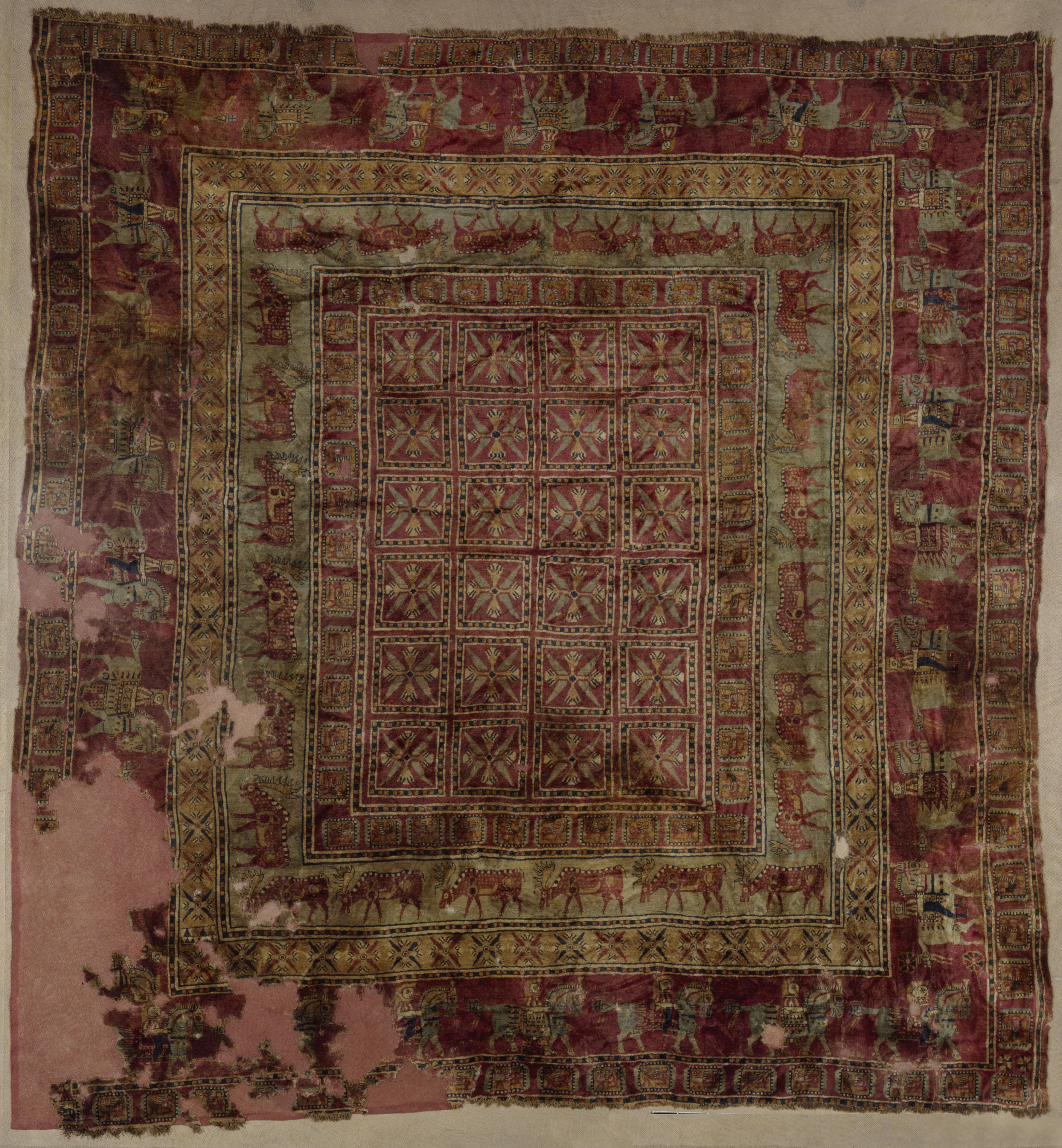Scythian horsemen on a carpet, Pazyryk Culture
5th - 4th century BC, State Hermitage Museum, St. Petersburg

A detail of the centre Skythian horseman at the left

Title: Pile Carpet
Place: Russia
Epoch. Period: Early Iron Age
Date: Pazyryk Culture. 5th - 4th century BC
Place of finding: Altai Territory, Pazyryk Boundary, the Valley of the River Bolshoy Ulagan
Archaeological site: Pazyryk Barrow No. 5 (excavations by S.I. Rudenko, 1949)
Material: wool
Technique: knot technique
Dimensions: 183 x 200 cm
Inventory Number: 1687-93
Found: Pazyryk Barrow No. 5 (excavations by S.I. Rudenko, 1949). Altai Territory, Pazyryk Boundary, the Valley of the River Bolshoy Ulagan
The world's most ancient pile carpet was found in the largest of the Pazyryk burial mounds. Its decoration is rich and varied: the central field is occupied by 24 cross-shaped figures, each of which consists of 4 stylized lotus buds. This composition is framed by a border of griffins, followed by another one of 24 fallow deer. The widest border contains 28 figures of men on horseback and dismounted. The once bright yellows, blues and reds of the carpet are now faded, but must originally have provided a glowing range of colours. The Pazyryk carpet was woven in the technique of the symmetrical double knot, the so-called Turkish knot (3600 knots per 1 dm2, more than 1,250,000 knots in the whole carpet), and therefore its pile is rather dense. The exact origin of this unique carpet is unknown. There is a version of its Iranian provenance. But perhaps it was produced in Central Asia through which the contacts of ancient Altaians with Iran and the Near East took place. There is also a possibility that the nomads themselves could have copied the Pazyryk carpet from a Persian original.
Source: State Hermitage Museum, St. Petersburg